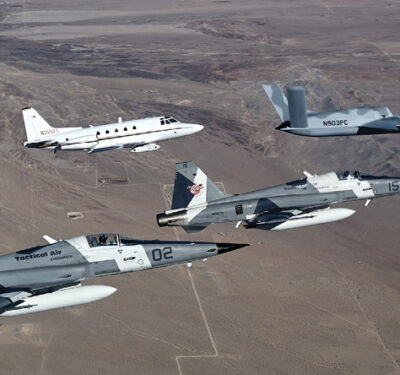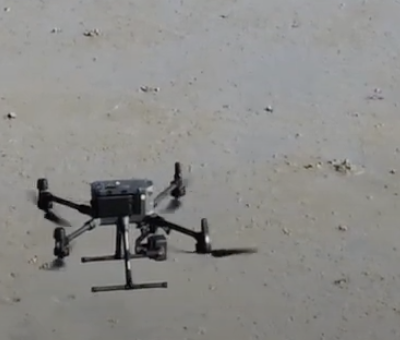AAM continues to evolve, with early applications and an industry focus on innovation setting the stage for the next transportation revolution.
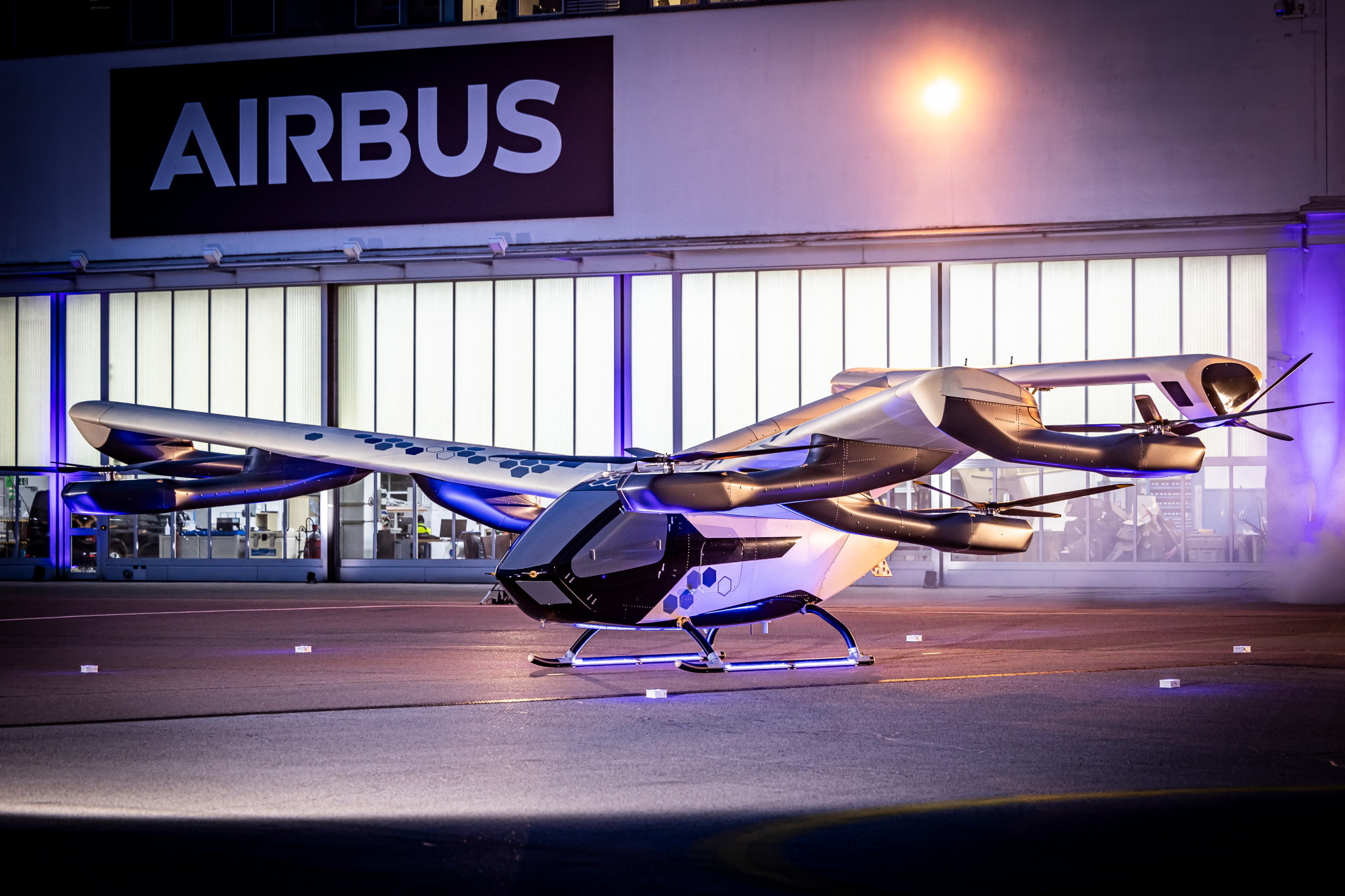
Advanced Air Mobility (AAM), while still in its early stages, is changing the way we think about aviation. Through this evolving ecosystem, we’ll move from a structure that relies on piloted aircraft to, eventually, uncrewed eVTOLs moving cargo and people safely through the skies. Industry leaders are reimagining air vehicles to meet such lofty goals, but AAM encompasses more than these systems and the technologies behind them. The infrastructure required for large battery-powered eVTOLs to operate, the unmanned traffic management system (UTM) that will allow them to safely integrate into the National Airspace (NAS), and the regulations that will guide the industry are also critical aspects of AAM.
It’s all fueling what some call the next transportation revolution, and even though there’s still a long way to go, much progress has been made. It’s no longer just that “pie in the sky future,” said Clint Church, chief engineer at Aurora Flight Sciences. AAM has moved beyond academic research to experimental learning in a variety of avenues, including the new configurations for air vehicles required to make urban air mobility, (UAM), the air taxi portion of AAM, possible, and how these aircraft will be managed.
Autonomy will enable AAM, allowing aircraft to reach places not easily served by traditional aircraft, transporting both goods and people in a way that’s safe, affordable and sustainable. Many of these aircraft will start out as piloted for faster entry into the market, but the goal is for autonomy to take over and humans to switch to a monitoring role. There will be a mix of crewed and uncrewed aircraft in this future transportation network, a complex challenge.
“We’re using technology in ways that have never been certified before,” said Taylor Alberstadt, Honeywell’s senior director, sales and marketing, “so we have the challenge of working with global authorities to ensure there are either new regulations, and it’s really difficult to have new regulations written, or the ability to work within the existing framework to ensure all technologies work together.”
There is real risk to moving objects and people through the air, uAvionix CEO Jon Damush said, and that risk must be mitigated by regulators—but there’s still a lot to learn. Much of that learning will come from smaller drones, with regulators expected to have a draft rule out in January that will allow more real-world missions for sUAS. These drones, with their small weight and low noise, can teach the industry about deconfliction and what it takes to safely integrate uncrewed systems into the NAS.
“This will enable AAM,” Damush said, “but the path is much more deliberate than the hype has indicated.”
Even so, the benefits are undeniable, with AAM offering more efficient, sustainable delivery and transport, and will only grow as the ecosystem continues to evolve.
“AAM will positively impact the way people work and live,” Alberstadt said. “It just opens up so many more opportunities.”
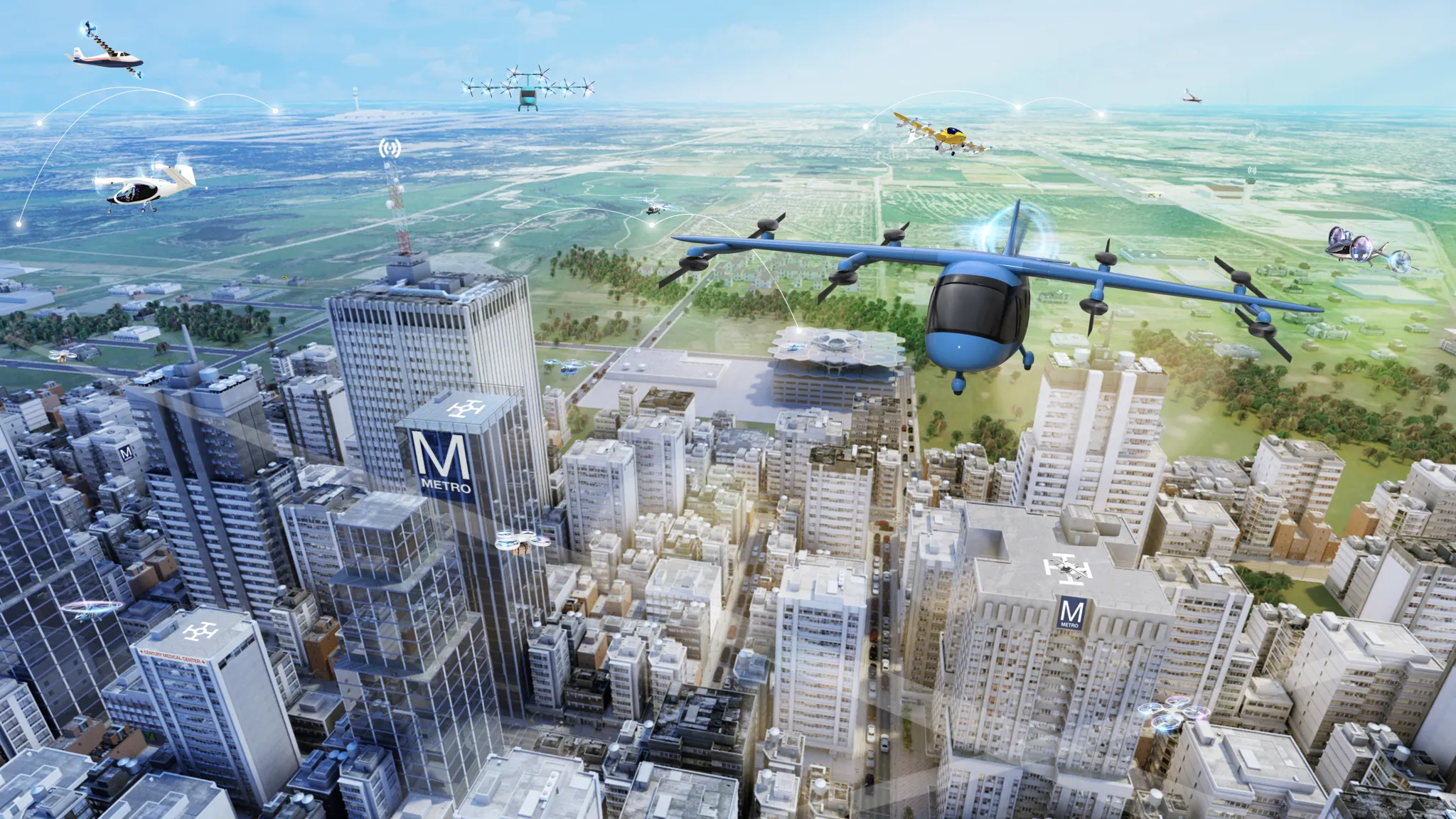
UTM: The Great Enabler
UTM is a critical part of the AAM ecosystem, providing the big picture of what’s going on in the airspace, whether that data is coming from a ground control station or directly from the aircraft.
Currently, UTM is focused on small drones operating 400 feet and below, said Parimal Kopardekar (PK), NASA’s Advanced Air Mobility (AAM) mission integration manager, and is managed by third party services. The main idea is to scale operations without overwhelming the current Air Traffic Control (ATC) system. That’s applicable to larger AAM eVTOLs as well.
Traditional crewed aircraft are managed by standard separation criteria, said Philip Binks, head of air traffic management at Altitude Angel, with ATC monitored via radar and pilots making adjustments as needed. The airspace is already busy and complex, so how do you add uncrewed systems into the mix? What should that separation between commercial and AAM aircraft be, and how will it be maintained? Today, ATC communicates with piloted aircraft via radios, but with the cost associated with hiring more controllers, the existing shortage in the talent pool and the eventual move to uncrewed aircraft, that isn’t a solution.
One way to address this challenge is to move uncrewed aircraft into separate corridors, Binks said. The problem is, segregation isn’t scalable. Integration is the goal, and that’s what UTM makes possible. Altitude Angel’s solution, for example, employs multiple sensor layers to share the necessary data with anyone who needs it, effectively managing the airspace and enabling drones to safely access the NAS. Even if a noncooperative drone enters the airspace or a system loses the ability to communicate, all other operators still know their location.
“With UTM, you can define the parameters of how you control these aircraft,” Binks said. “This aircraft needs three miles of separation, while this aircraft might need one. You can have multiple standards you put into the computer to make sure the aircraft goes in the direction it needs to go to maintain aviation safety. But we’re going to get to a point where a human won’t be able to do that. UTM needs to manage AAM in the sky, and once aircraft get certified and we build up confidence levels, we’ll move from hands-on piloting to on the loop monitoring.”
The vision, Damush said, is for every vehicle in the airspace to be aware of every other vehicle and to self-deconflict. When given near perfect data, computers can do that quickly. The challenge is getting that near perfect data, which includes an aircraft’s 3D position, type of vehicle, the vehicle’s speed and where it’s going. If that information can be shared across every vehicle, traffic can be distributed across a wider area—and that opens up the opportunity for significant growth.
Small drones make it possible to try out these concepts in a relatively low consequence environment, Damush said, and could be “the way we evolve air traffic control in general.”
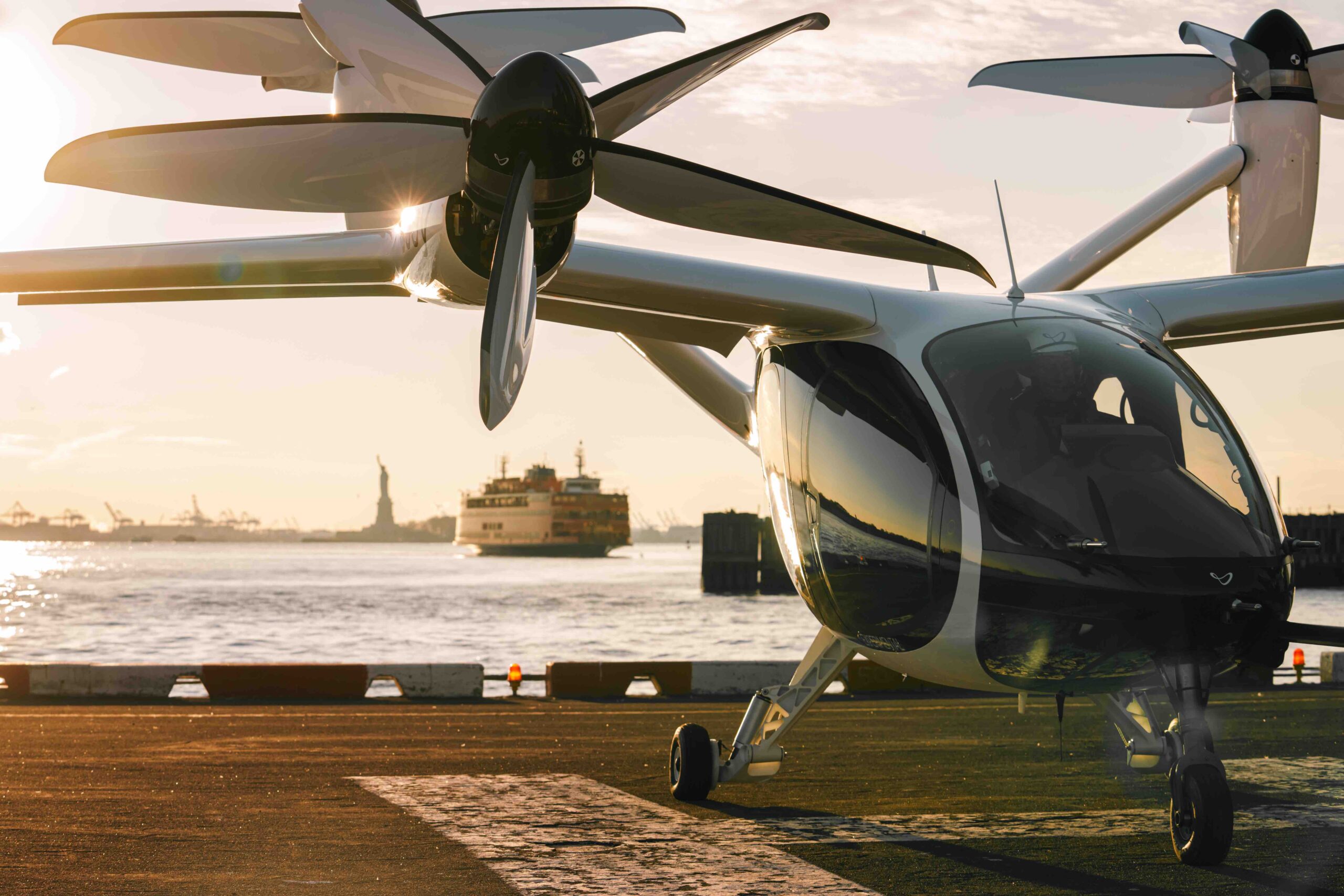
It’s critical to prioritize how these novel eVTOLs will operate in the NAS, Alberstadt said, and FAA advisory committees and working groups are helping to define that. The scale of AAM makes it necessary to rethink what traffic management looks like, and what software and systems will support it. The ecosystem needs ground control stations that efficiently communicate with towers without much human involvement, operating one to one at first and ultimately one to many.
“Having the FAA invest in the proper research and thinking about how to create a successful framework in the co-evolution of what is possible in aircraft technology and how it fits into the transportation framework is critical,” Church said. “UTM is not just an enabler; it’s mandatory. You have to have a traffic management framework in which to operate.”
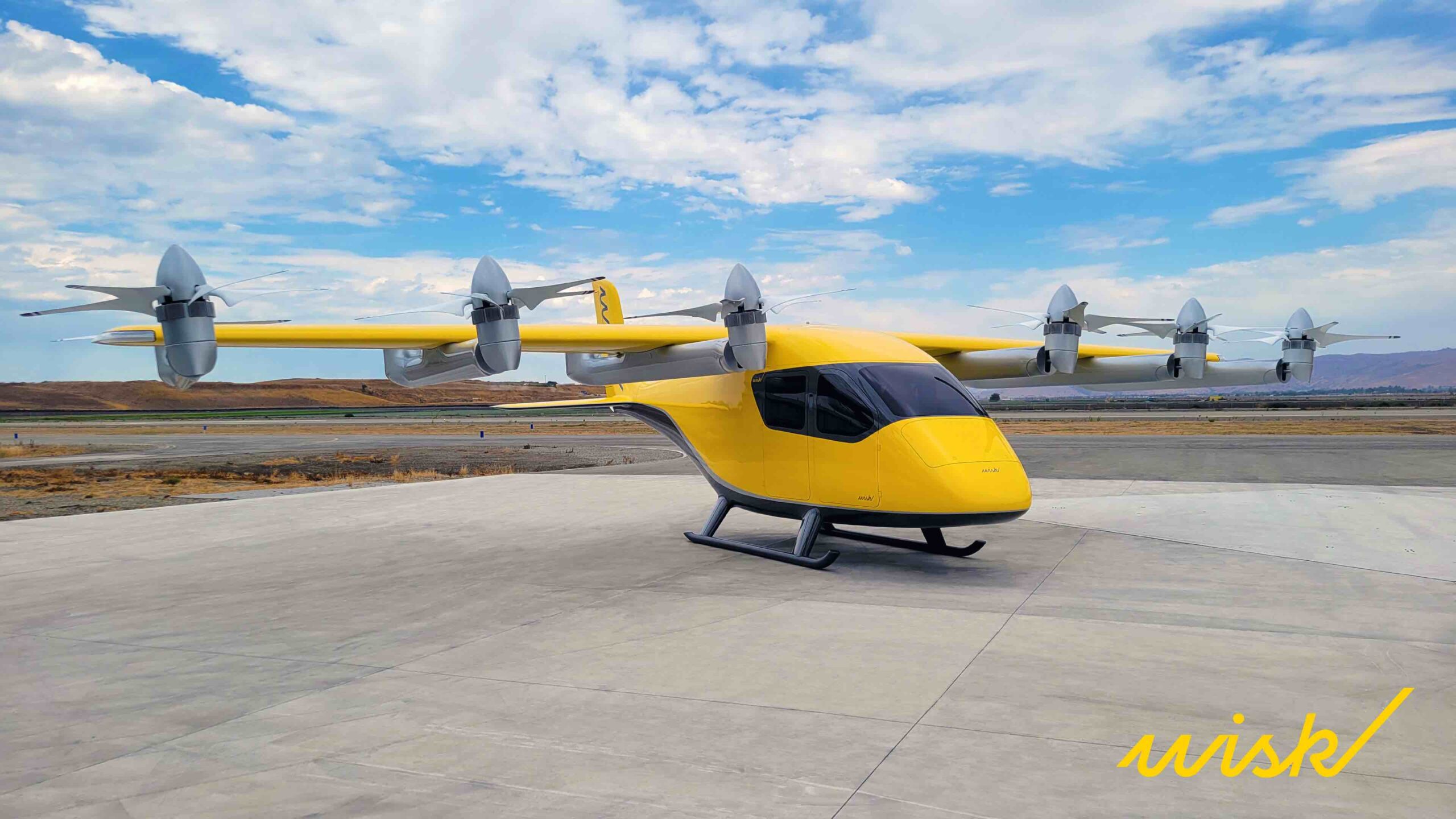
Ready to Go
Wisk is focused on AAM passenger transport through a multi-modal air taxi service. The company has been flying autonomous eVTOL flights since 2017, completing more than 1,750 full-scale test flights, a spokesperson said. While no AAM aircraft is 100% certified, the technology is ready.
“This is real and it is happening now,” the spokesperson said. “The challenge is making sure this new form of aviation is certified to the same levels of safety as commercial aviation.”
A variety of technologies are required for safe AAM services, a Wisk spokesperson said, including aircraft hardware like propellers, booms, tilting propulsion units, battery systems, and autonomous flight technology. Companies are also working to develop sophisticated sensor systems and AI “to support pilot assistance and fully autonomous operations,” a Joby spokesperson said.
Innovation in battery technology and electric propulsion are also critical. Battery technology “unlocks the promise of AAM,” Honeywell’s Taylor Alberstadt said, making these vehicles safer, quieter, less expensive and more environmentally friendly aircraft than those powered by fuel.
Early Cases
Even though flying air taxis are years—maybe even decades—away, there are several other AAM applications that won’t take as long to realize.
When you look at what small drones are already doing, there’s a lot to list, from infrastructure monitoring to inspections, Kopardekar said. But when you expand to UAM and the eVTOLs that are part of it, there’s even more opportunity.
Expanding air medical services is one of them. Airbus, for example, has partnered with the Norwegian Air Ambulance Foundation to develop CityAirbus NextGen’s medical services in Norway. This could include organ delivery, said Andra Steltemeier, director business cooperation for Airbus Urban Mobility, which will require determining what medical equipment must be on the aircraft and the best routes.
Ecotourism is another area Steltemeier sees taking off quickly. With sightseeing tours, aircraft don’t even need to fly from point A to point B; it’s point A back to point A. eVTOLs like CityAirbus are noise neutral, so there’s no disruption, making it a logical replacement for the helicopters that perform such flights today.
While we’re likely not going to be calling up an air taxi Uber style anytime soon, scheduled flights are in reach, Steltemeier said. In this application, aircraft fly a prescribed route at a dedicated time, making it a less complex challenge to solve.
These novel eVTOL will also have a place in agriculture applications like spraying and emergency response like firefighting, Damush said. Basically, anything a helicopter might handle today, though challenges like battery power and endurance remain a factor.
Then there’s delivery. The FAA has already granted special exemptions for last mile delivery for sUAS, Alberstadt said. Delivering food and other small items carries a lower safety risk than moving people, so it make sense for this to be among the early use cases.
Large cargo delivery is an area of interest for eVTOLs, Alberstadt said, with warehouse to warehouse making the most sense. Space and weight constraints will make middle mile delivery a challenge, but still, AAM can become another modality to complement today’s semi-trucks and rails.
Despite limitations, there’s an interesting mix of use cases, Damush said, including transporting people.
“Passenger carriage is a viable business segment, but we won’t make a magical leap to democratize the cost of a flight to the cost of a bus ticket,” he said. “It will be expensive at first and limited availability, but brought to market the right way and done safely, it could eclipse the helicopter charter market within a decade, and that’s pretty interesting. That could be the first step required for the communities the systems are flying over to become more accepting of these vehicles than they are of helicopters. And if that happens, it could stimulate growth.”
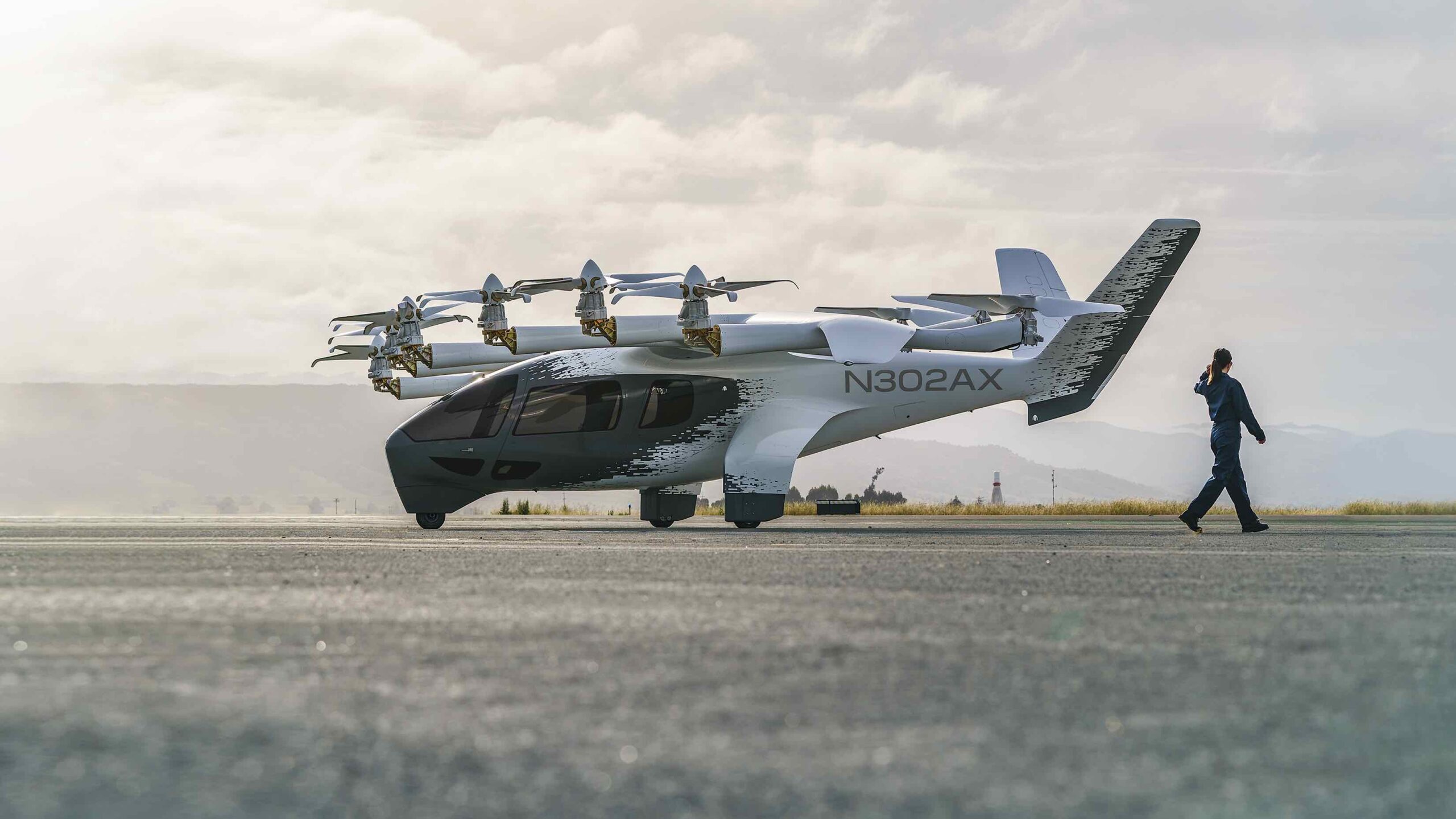
Intra-city mobility
Archer Aviation is developing the Midnight eVTOL. In June, the company received its Part 135 Air Carrier & Operator Certificate from the FAA. This allows Archer to begin operating conventional aircraft commercially to refine its systems and procedures before launching Midnight into service.
Archer also recently announced a partnership with Kilroy Realty Corporation to develop a UAM network that connects five locations across the Bay Area. The company is focused on intra-city mobility, a spokesperson said, which they see as the most compelling and pressing use case.
The Ultimate UAM Vision
Eventually, these aircraft will transport large cargo and passengers, starting regionally and then expanding out to further ranges, Kopardekar said. There will be a mix of small drones, eVTOLs and fixed wing aircraft, both autonomous and piloted, taking on different use cases to support varying societal needs.
“If you’re actually able to leverage air transportation, one mile of aviation can take you many places,” Kopardekar said. “You can imagine a future where urban areas and suburbs can be more geographically distributed. You don’t have to just go where the road takes you; you can go where aviation takes you. That will transform society, allowing for more greener, integrated living.”
The sweet spot for AAM, Damush said, is trips between 30 and 500 miles. Most people will drive anything less than 30 miles. Even though there’s traffic to contend with in big cities, it’s still fairly predictable and more convenient to drive. Commercial airlines will likely remain the go-to for longer flights, but that gap in-between, what he calls the AAM donut, is where multi-modal transportation could play a larger role.
Globally, some countries are moving closer to people movement, Alberstadt said. China, for example, has made significant progress in helping “homegrown companies move at a fast pace,” with eHang an example. India and Saudi Arabia are among others eyeing entry into the market by 2026. In the U.S., there’s a lot of focus on how LA will be ready with AAM for the 2028 Summer Olympics, while Germany’s Volocopter provided demonstrations during the 2024 Paris Summer Olympics.
“We’re on a vector,” Alberstadt said “to have the opportunity for select cities to move people around in the next 24 months.”
To get there, it’s critical to consider what entry into service looks like, Alberstadt said, not just from an operational point of view but also how communities perceive it. This isn’t an “if we build it, they will come situation;” industry needs to show how safe these vehicles are and the benefits they bring, from reducing traffic congestion and emissions to better connecting communities.
“We need to show it in a safe way, and not just for a select few,” he said. “If it’s seen as a business jet for the wealthy, it’s going to be a challenge to get public acceptance. The promise of AAM at a few dollars more for drone delivery or Uber Black prices for air traffic travel needs to be demonstrated to get that buy-in.”

Public acceptance
Getting the public on board with AAM is critical, and that means developing quiet, safe aircraft that provide an affordable transportation option.
“This is where higher levels of automaton are likely to help,” NASA’s PK said. “You can safely perform operations without needing a lot of human involvement. So, there is a balance of making sure safety is ensured and that there is good teaming between humans and automation.”
Starting with dedicated use cases like medical services will also help gain social acceptance, Steltemeier of Airbus said, making the benefit of flying electric vehicles tangible.
“Companies are engaging with communities to address concerns about noise, safety and environmental impact,” a Joby spokesperson said. “We will likely start seeing more demonstration flights and pilot projects to showcase the capabilities of AAM vehicles and build public confidence.”
Developing the Infrastructure
Essentially, these advanced aircraft need places to take off and land, for passengers to embark and disembark, space to recharge batteries and space for maintenance, which can be separate from the day to day operations, Damush said.
eVTOLs can operate from existing airport and heliport infrastructure or vertiports developed specifically for “areas not touched by aviation before,” Kopardekar said. Vertiports, which will likely be set up on top of parking garages and tall buildings, must provide reliable navigation, whether through GPS or an alternative, as well as comms. These novel aircraft must be able to take off and land safely from these locations without interfering with other aircraft.
Vertiports require a lot of time and money to build, Damush said, but there are many underused airports that can be leveraged to accelerate integration in the meantime.
“A company could create a UAM business today with the existing infrastructure, they would just be constrained on what they could do,” Church said. “But for it to really flourish, more infrastructure is needed.”
Vertiport location is key, Steltemeier said, as the entire point of traveling via an eVTOL is to save time. It must be easy for passengers to get to and from the vertiports. There has to be a value add, or customers won’t consider it a viable transportation option.

Church envisions a density of vertiport corridors in the future. Unlike commercial aircraft that’s powered by fuel, these systems must land frequently for battery changes and charging, and the infrastructure must meet that need. Developing the infrastructure in tandem with the aircraft and tweaking both along the way is critical to achieve “the broader potential of what the system could be.”
Once we move from piloted to uncrewed aircraft, pilots will still need to monitor the aircraft and interface with the vehicles and the airspace management network they operate within. There won’t be a human pilot in the cockpit talking to ATC, so it’s important to determine where this person will be and how many vehicles he or she operates at a time.
Wisk’s strategy for its future air taxi service is to leverage existing aviation infrastructure, a spokesperson said, transforming lightly used airports into transportation hubs and community centers. Wisk is taking a “self-flying first approach” rather than putting a pilot onboard, even though it will take longer to get to market. Wisk’s now sixth generation aircraft is an all-electric, fixed-wing, with tilting propellers and a 50 foot wingspan.
Archer Aviation plans to put a pilot on board its Midnight aircraft, which is targeted to begin service as early as 2025, a spokesperson said. The eVTOL is about 1,000 pounds and will fly rapid back-to-back 20 to 50-mile flights with a charging time of about 10 minutes in between. At launch, most vertiports will be integrated into existing aviation structure, though the company plans to explore non-aviation options like parking lots when operations scale.
Joby Aviation is developing a piloted eVTOL with a range of 100 miles on one charge, a spokesperson said. It can transport a pilot and four passengers and “is designed to help reduce urban congestion and accelerate the shift to sustainable modes of transit.” The company expects to begin service in 2025.
No matter the approach, the FAA, city and municipal governments must play an active part in developing and repurposing infrastructure to ensure it aligns with what will become industry-wide standards, the Wisk spokesperson said.
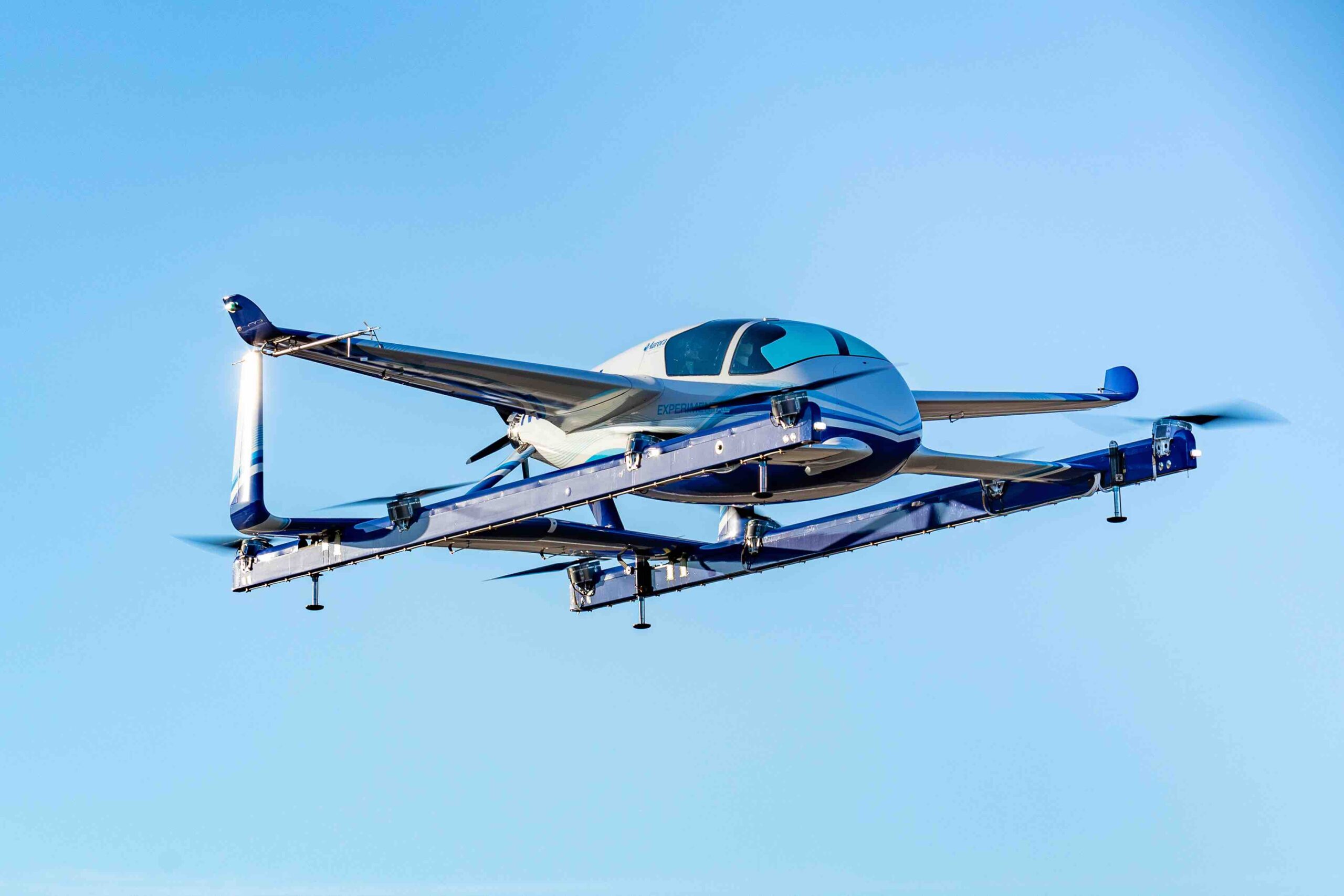
Hydrogen
While batteries are a popular way to power eVTOLs, hydrogen is another clean energy that’s starting to garner attention.
Joby Aviation, for example, recently flew a hydrogen-electric air taxi demonstrator 523 miles, with water as the only by-product. The aircraft builds on Joby’s battery-electric air taxi development program, demonstrating the potential for hydrogen to allow for emissions-free, regional journeys that don’t require a runway.
“Our hydrogen demonstrator shows how the technology we have developed could support regional travel beyond cities,” a spokesperson said, “for example connecting regions up to 500 miles without the need for runways or an airport stop.”
Moving Forward
The progression for AAM, Church said, will go from moving data, to moving objects to moving people, with a heavy level of autonomous operation. It all goes back to that experimental learning that’s happening today, with companies like Amazon and Wal-Mart testing out package delivery, for example, and the incremental steps we needed to get to that ultimate AAM vision.
The FAA is now working on certifying what Kopardekar described as the eVTOL frontrunners, and he expects that to come in the next year. While that is happening, NASA’s focus is on mid- and long-term goals, including what systems and technologies need to be in place to scale operations.
NASA is still working through the concepts, simulations and flight tests to ensure they understand what the requirements need to be and to set those requirements alongside the FAA and industry, Kopardekar said. They have various projects focused on ironing out all those critical details, including airspace integration, air traffic management, batteries and propulsion, and emergency operations.
Four or five years ago the AAM milestones industry targeted were really just placeholders, Alberstadt said. Today, customers are in deep development programs, with dates backed up with detailed schedules. The industry is no longer “throwing darts at the board.” There are vehicles on the verge of certification, with products from companies like Honeywell going into production aircraft.
Honeywell is focused on a future where air taxis transport passengers on 100 mile journeys in 45 minutes or less, and where same day delivery anywhere in the world via drone is possible. Autonomy is the key to enabling these and other AAM applications and to truly scale. Tasks typically performed by pilots will be methodically moved to the machine, in a way that’s traceable and repeatable.
That ultimate goal of ordering air taxis like an Uber, with the UTM system finding the closest vehicle to send to the location, is within reach, but there are regulatory and safety hurdles that must be overcome before we get there, Binks said.
“It’s evolving and it’s exciting, but we need to be cautious about timelines,” Steltemeier said. “We need to keep the passion and curiosity but we also need to allocate a pragmatic approach and remember it’s an evolvement.”
Project Skyway
Altitude Angel is part of Project Skyway, a consortium working with the UK’s Civil Aviation Authority to enable drones to travel BVLOS. Altitude Angel is building 165 miles of “drone superhighways” to connect airspace above cities south of the UK. It will be enabled through the company’s ARROW technology.
Drones that enter these superhighways don’t need specific onboard sensors; the sensor network along the ground will provide the guidance for safe operation.
“The airframe is connected to the UTM operating system, so we can allow drones to operate BVLOS in integrated airspace,” Altitude Angel’s Philip Binks said. “Anyone can operate in that airspace.”




